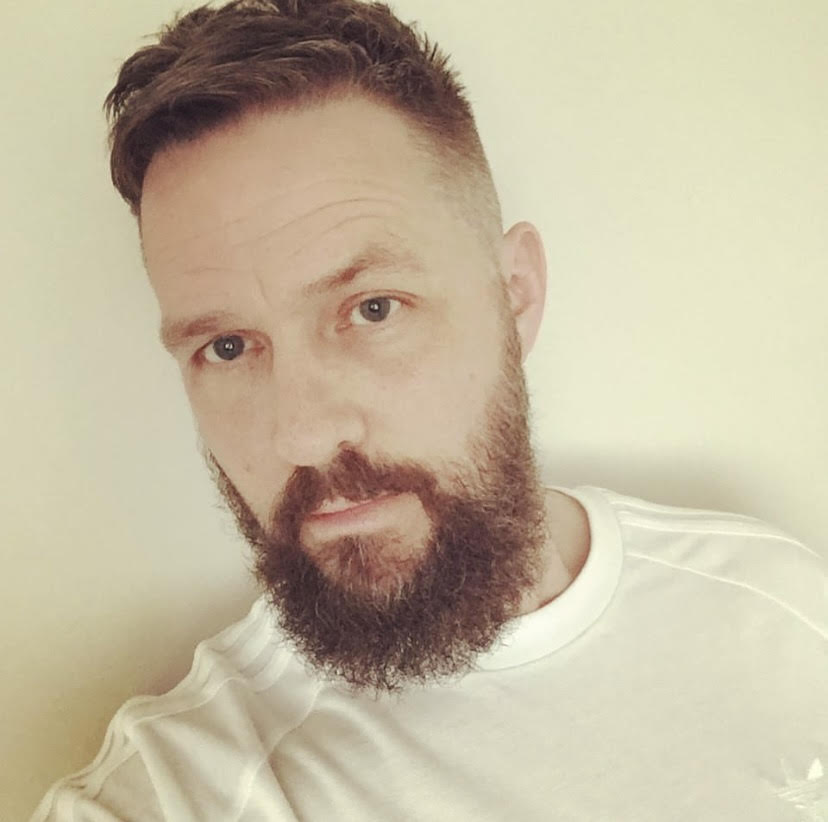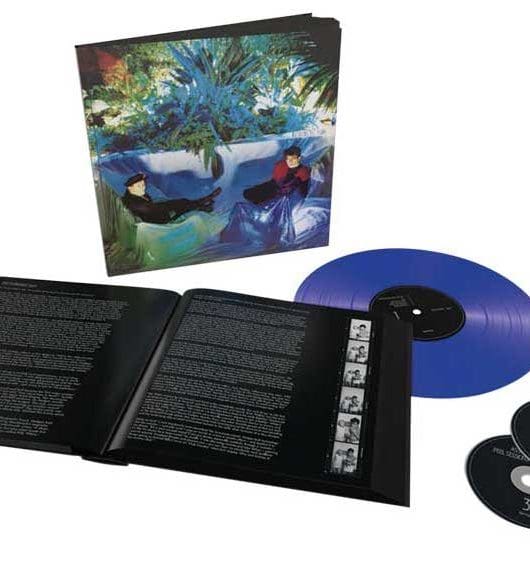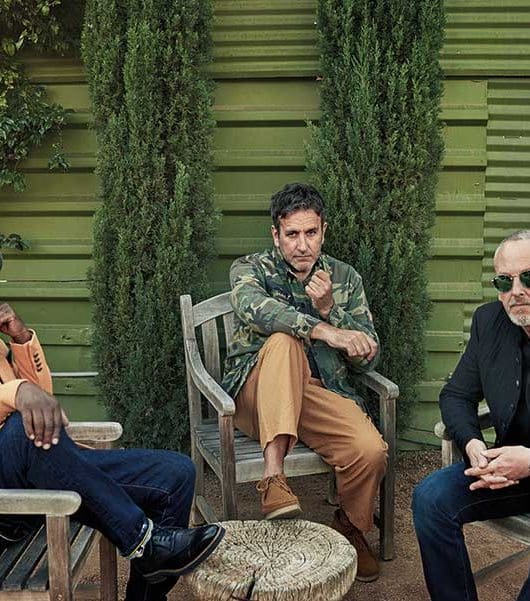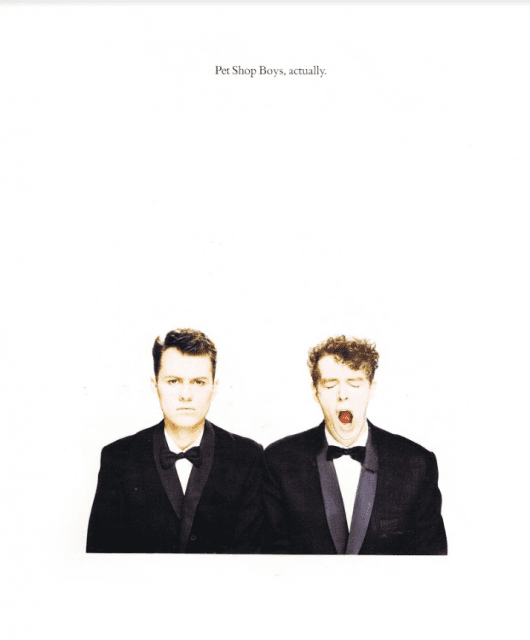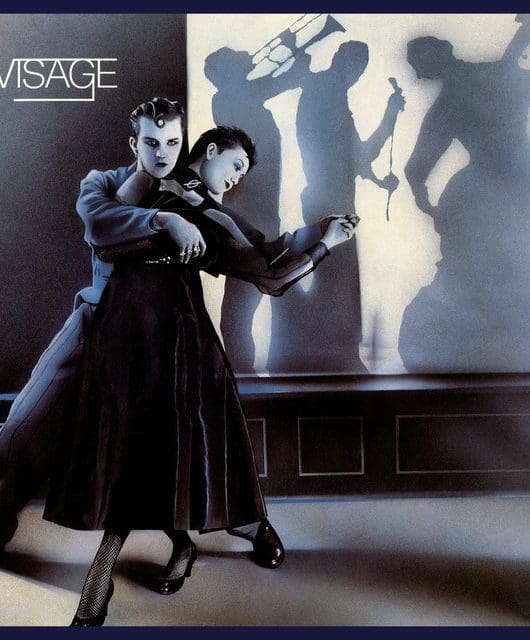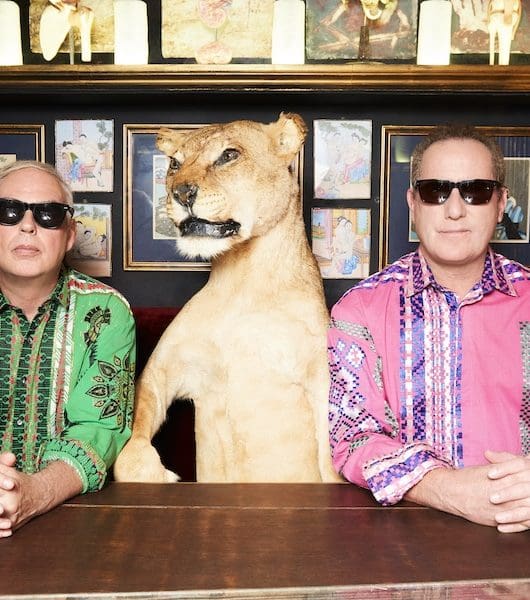Making KLF: The White Room
By Mark Lindores | February 18, 2022
Subsidised with the proceeds of an 80s novelty hit, the eccentricities, the vision and ambition of KLF, combined with their taste for acid house and anarchy, resulted in The White Room, one of the finest dance-pop albums of the 90s…
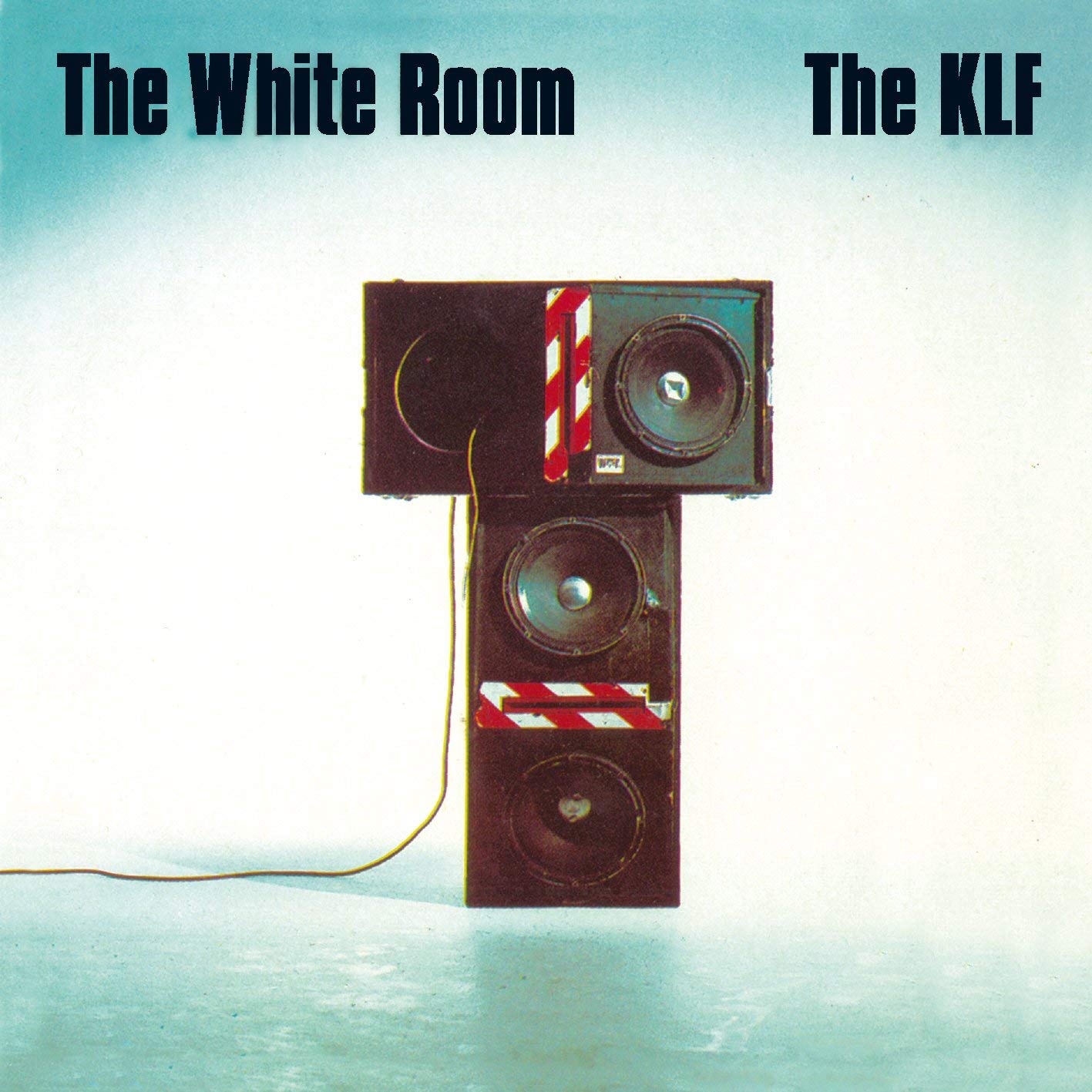
If Queen at Live Aid personified the theatrics and showmanship of stadium rock in the 80s, the dawning of a new decade saw a pair of mavericks inject it with their own brand of anarchy and self-mythologising hyperbole to create stadium rave.
Together, they transformed themselves from saviours of the underground Acid House scene to mainstream mavericks, emerging as Europe’s biggest-selling singles act of 1991 thanks to a string of constantly evolving dance classics which were remixed, remade and remodelled to reflect the rapidly evolving scene of which they were at the forefront.
As the undercurrent of Acid House bubbled to the surface of mainstream culture, Jimmy Cauty and Bill Drummond rode the wave all the way from illegal parties in abandoned warehouses and fields to making music for the masses, the self-proclaimed “creators of trance, the lords of ambient, the kings of stadium house, the godfathers of techno-metal, the greatest rave band in the world ever”.
It was an unlikely mutual alliance with Stock Aitken Waterman that proved the foundation of Drummond and Cauty’s musical brotherhood in 1986. By this time both were well versed in the workings of the music business − as artists and behind the scenes.
Drummond had begun his career in Big In Japan with future Frankie Goes To Hollywood frontman Holly Johnson before managing Echo & The Bunnymen and The Teardrop Explodes as well as working as an A&R man for WEA Records.
It was during the latter that he signed Brilliant, a band of which Cauty was a member. Though Brilliant failed to take off, despite having been produced by Stock Aitken Waterman, Bill and Jimmy remained friends following the group’s split in 1986 and it was a mutual passion for hip-hop and the burgeoning dance scene that led to them forming their own musical partnership.
“It was New Year’s Day, 1987,” Bill later recalled to Radio 1. “I was at home with my parents, I was going for a walk in the morning, it was, like, bright blue sky, and I thought, ‘I’m going to make a hip-hop record. Who can I make a hip-hop record with?’ I wasn’t brave enough to go and do it myself, because, although I can play the guitar and can knock out a few things on the piano, I knew nothing, personally, about the technology. And I thought of Jimmy. I knew he was a like-minded spirit. So I phoned him up that day and said, ‘Let’s form a band called The Justified Ancients of Mu-Mu.”
Having both spent time in SAW’s Hit Factory studios, Jimmy and Bill were inspired by the advances in technology and the capabilities it afforded them as musicians. “We both had backgrounds in guitar music and were bored by it,” Bill told BBC 6 Music in 2004. “We discovered samplers and wanted to dump the entire history of pop music and start entirely from scratch. We were excited by the idea of using samples and building things up and crafting music that way.”
Read more: Top 20 80s house hits
Read more: Top 15 sophisti-pop albums
Their enthusiasm at what they were creating blinded them to issues regarding copyright and legalities, and their first forays into music as The JAMs led to a number of abandoned releases and aborted projects due to the threat of legal action over uncleared use of samples from everyone from The Beatles and Samantha Fox (first single All You Need Is Love featured the Fab Four track of the same name along with Sam’s Touch Me), Whitney Houston and ABBA (an unsuccessful pilgrimage to Sweden to personally seek the approval of Björn, Benny, Agnetha and Anni-Frid led to them burning copies of their withdrawn 1987 (What The Fuck Is Going On?) album).
After further tracks continued to bring more threats of litigation and lawsuits, Jimmy and Bill dumped their King Boy D and Rockman Rock alter-egos and shifted their focus towards dance music, topping the charts as The Timelords with their novelty hit Doctorin’ The Tardis, an amalgamation of the Doctor Who theme and a glam-rock stomp which saw them turn up on Top Of The Pops with a pre-shamed Gary Glitter and publishing a how-to book, The Manual (How To Have A Number One The Easy Way). Although quickly dismissed by the duo as “an embarrassment”, the record provided them with the financial viability to enter the next chapter of their career.
Now with a budget to match their ambition and imagination, The KLF set their sights on film as well as music and flew to Spain to shoot a film, The White Room. Envisioned as a road movie which included references to some of their own real-life experiences, it proved a much greater and more expensive process than they’d anticipated.
As well as concurrently recording an album which was to be the film’s soundtrack, they also released Chill Out, an ambient dance album. Having spent over £250, 000 in just two weeks on the film, they hastily rushed out a single, Kylie Said To Jason, in order to generate some cash but after the single flopped, they shut down production on the film and set about salvaging the music they’d created for the soundtrack into an album.
Inspired by the sounds coming from Acid House clubs such as Shoom and Spectrum, Bill and Jimmy announced their next releases would be more dance-based and released under the name of The KLF (The Kopyright Liberation Front). As well as the music, they were seduced by its anti-establishment ethos and creative freedom.
“We wanted to make The KLF something that was pure dance music, without any reference points, without any nod to the history of rock and roll. It was the type of music that by early ‘87 was really exciting me,” Bill told Radio 1.
Describing their music as “Pure Trance”, they released the first in a series of 12″ singles, What Time Is Love?. Although it wasn’t initially successful, the song went on to have a life of its own. It became a huge success across Europe and the UK, selling out of its initial pressing.
As the record was sold out, a twist of irony saw the band who had been threatened with lawsuits and forced to shelve a previous album due to unauthorised use of samples, now finding themselves subject to their music being bootlegged and sampled.
Keen to maintain control and ownership of their music, they remixed the song, not only reissuing it but also releasing an EP of all of the unauthorised remixes that had swept through the scene. A Live At Trancentral single mix, released in July 1990, proved to be the crossover track they’d been searching for, reaching No.5 in the UK.
Back at their Trancentral HQ in Stockwell, they amassed a collective of “additional communicators” to work on tracks with them including Errol Nicholson (aka Blacksteel), Maxine Harvey, Azat Bello, Ricardo Da Force, PP Arnold, Nick Coler, Mark ‘Spike’ Stent and Tony Thorpe.
The environment at the pair’s studio was one of an endless stream of creativity with ideas flowing freely.
3 A.M Eternal was the next track to be remixed for the charts and landed them their first No.1 as The KLF in January 1991. The song also gave them unexpected success in the US reaching No.5 on the Billboard singles chart, a feat which meant a great deal to the group due to the fact that they’d done everything on their own terms.
“It was important for me that The KLF was successful worldwide because I hated bands somehow who thought they were big and, really they were only in big in this fake world of NME and Melody Maker,” Bill Drummond told Richard King for his How Soon Is Now? book.
“They would have a fan following that could put them in the Top 20 but I was thinking, that’s not a real Top 20 record, that’s just your cult following buying it in a week and I’m not interested in that. I wanted to know that the records we’re making were touching vast amounts of people. That was incredibly important.”
This affirmation in what they were doing continued with the eventual release of The White Room in March 1991. Entering the charts at No.3, it remained in the rundown for almost a year, no doubt bolstered by the further hit singles Last Train To Trancentral (Live at SSL) followed by two songs that were radically remixed for release as singles –Justified & Ancient (Stand By The JAMs), featuring Tammy Wynette and America: What Time Is Love?, both of which were Top 10 hits.
With massive success in their own right, remix duties for Pet Shop Boys and Depeche Mode, and offers to work with Prince plus Whitney Houston (a full circle moment after the legal wrangling over their Whitney Joins The JAMs single), The KLF, having achieved everything they set out to, began to plot their exit from the music business in typically grandiose fashion.
Capping their year of extraordinary success at the BRIT Awards, they saw the ceremony as the ideal location to carry out one last act of rebellion and announce their retirement from the music industry. After performing a raucous version of 3 A.M. Eternal with crusty punks Extreme Noise Terror, they began firing blanks from a machine gun at the stunned industry crowd.
As they left the stage, The KLF’s promoter Scott Piering announced over the PA system that “The KLF have how left the music business”, before the group dumped a dead sheep outside the official BRITs after-party with a sign round its neck saying “I died for you. Bon Appetit”.
With a music press well used to their headline-grabbing antics and publicity stunts, it was best described by Select magazine. “It’s the last grand gesture, the most heroic act of public self- destruction in the history of pop,” they wrote. “And it’s also Drummond and Cauty’s final howl of disgust, defiance and contempt for a music world gone foul and corrupt.” It was the perfect epitaph.
Read more: The complete guide to the KLF
The KLF: The White Room – The Songs
1 What Time Is Love?
Recorded with the proceeds from their Doctorin’ The TARDIS single, the original 1988 version of What Time Is Love? marked a shift for Bill and Jimmy away from hip-hop towards dance music. The first of their Pure Trance 12″ singles, the song’s title is a reference to clubbers asking what time their Ecstasy will take effect.
Like subsequent KLF releases, the song took on various incarnations. After the initial run of Pure Trance 12″ singles sold out, Jimmy and Bill remixed the previously instrumental track and added further instrumentation and vocals (the prominent “ I wanna see you sweat” was sampled from Wanda Dee’s To The Bone) and a rap from Outlaw Crew’s Azat Bello, culminating in what they described as our “three-note warhorse of a signature tune”.
The first of their Stadium House Trilogy, it is an edit of this Live At Trancentral mix that appears on the album. The single was their first hit under the KLF moniker and reached No.5 in the UK in July 1990.
After undergoing various remixes (including one from Echo And The Bunnymen who Bill used to manage back in the day), a reworking of the song entitled America: What Time Is Love? featuring vocals from Deep Purple’s Glenn Hughes was released in the US in October 1991 and four months later in the UK to coincide with their notorious performance at the BRIT Awards.
2 Make It Rain
The crowd noise (itself a sample taken from U2’s Rattle & Hum to convey the false impression of being a live album) dissipates to welcome a soaring vocal from Maxine Harvey which itself gives way to pounding beats, squelching synths and a saxophone solo from Duy Khiem – all hallmarks of the classic acid house sound.
As with many of the tracks, keyboardist Nick Coler recalled that Make It Rain originated as an epic eight-minute groove that was subsequently edited down to its eventual four-minute running time.
3 3 A.M. Eternal (Live At The S.S.L.)
As had been the case with What Time Is Love?, 3 A.M. Eternal was originally a Pure Trance 12″ single released in 1989, before being reworked as the second instalment of their Stadium House Trilogy in 1991. It is an edit of this version that was included on The White Room.
Kicking off with a cavalcade of machine gun fire, the unmistakable voice of soul legend P.P. Arnold’s “KLF: Uh-huh, uh-huh” introduces the band’s biggest hit with Maxine Harvey taking over vocal duties for the remainder of the song and Ricardo Da Force stepping in to provide the rap due to Azat Bello being on tour and unable to contribute to the song.
Taking its name from closing time at the Spectrum club, 3 A.M. Eternal once again was billed as a live track complete with crowd noise but was an in-joke amongst the band given that the ‘Live At The S.S.L.’ was, in fact, a reference to the Solid State Logic mixing desk of their studio. The song gave Jimmy and Bill their second UK No.1 hit – their first as The KLF in January 1991 and also broke the US Top 10 when it reached No.5.
4 Church Of The KLF
Although credited as a track in its own right, Church Of The KLF is essentially an outro to 3 A.M. Eternal which features a refrain of “Take me to the church of KLF” from P.P. Arnold and chants from Maxine Harvey about love and peace. Arnold had provided vocals which were used throughout the album, but claims she was never paid for her contributions and was infuriated when Jimmy and Bill later staged their ceremonial burning of £1million still owing her money.
5 Last Train To Trancentral
The third in the Pure Trance series in March 1990, Last Train To Trancentral was a reworking of Go To Sleep, a track taken from the original soundtrack to The KLF’s abandoned film The White Room, and also included melodies and elements featured on their Chill Out album. For the album version, Last Train To Trancentral was re-imagined as a house track including a rap from Ricardo Da Force and vocals from Blacksteel. The album version formed the basis of the single remix in April 1990, which became the third and final part of the Stadium House Trilogy. Taking its title from the group’s Trancentral recording studio, which was in the basement of Jimmy’s squat in Stockwell, Last Train To Trancentral confirmed The KLF as an unstoppable chart force when the single reached No.2 in the UK.
6 Build A Fire
Perhaps the strongest indication of The White Room’s origins as a soundtrack album is the atmospheric Build A Fire with its sublime country-inspired sonics before Bill Drummond delivers a narrative referencing Lee Marvin’s Wandering Star which is interspersed with a simple vocal hook from Maxine Harvey. It’s a welcome respite from the frenetic dance tracks.
7 The White Room
Although a breakbeat provides the foundation of the title track, it is low in the mix and the song has an atmospheric, mellow feel featuring an amalgamation of references from a hazy clarinet solo, tribal chants and addictive vocal refrain.
8 No More Tears
No More Tears introduces a dub, reggae feel which is a soulful duet between Blacksteel and Maxine, whose “No more tears as we roll through the years” is hypnotic as it is repeated throughout the song. Proving there is much more to The KLF than the rave anthems, the triptych of Build A Fire, The White Room and No More Tears are an interesting sonic diversion.
9 Justified And Ancient
A charming, soulful take on the track that would prove to be a dancefloor monster when revamped and released as a single with added beats, added samples and added Tammy Wynette. Bookending the album, Blacksteel opened and closed The White Room LP with the song which had been part of Drummond and Cauty’s canon since 1987. It is, however, the union of The KLF with Wynette for the single remix which for many is the definitive version of the track. It reached No.2 in December 1991.
The Players
Bill Drummond
A true maverick, Bill founded Zoo Records before becoming an artist in Big In Japan and as a solo act. Since The KLF, he and Jimmy founded the K Foundation, which undertook projects related to the arts. He has since embarked on various endeavours related to art, politics and music as well as being a successful author – most recently publishing 2023: A Trilogy By The Justified Ancients Of Mu-Mu.
Jimmy Cauty
After beginning in Brilliant and Zodiac Mindwarp And The Love Reaction, Jimmy founded The KLF with Bill and The Orb with Alex Paterson. Following The KLF, Jimmy remixed artists such as Placebo, Marilyn Manson, Ian Brown and U2 under the charming name of The Scourge Of The Earth. More recently, he has focused on his art career.
